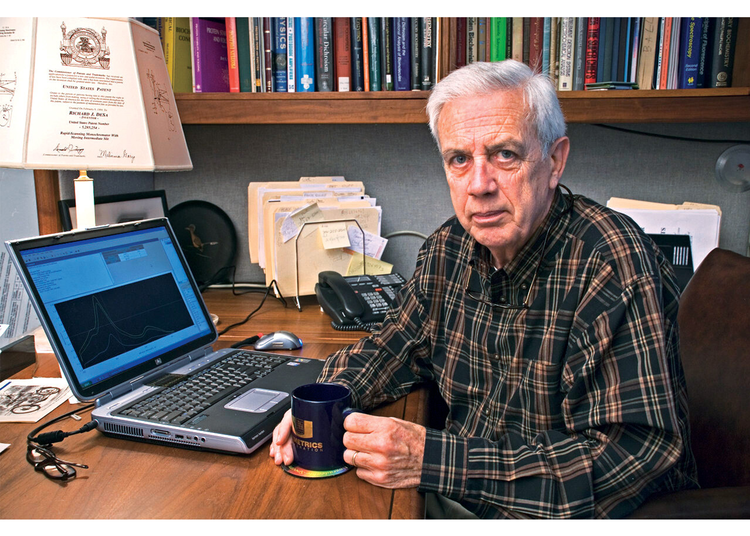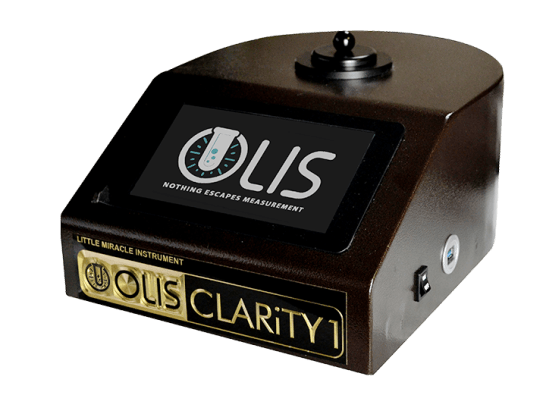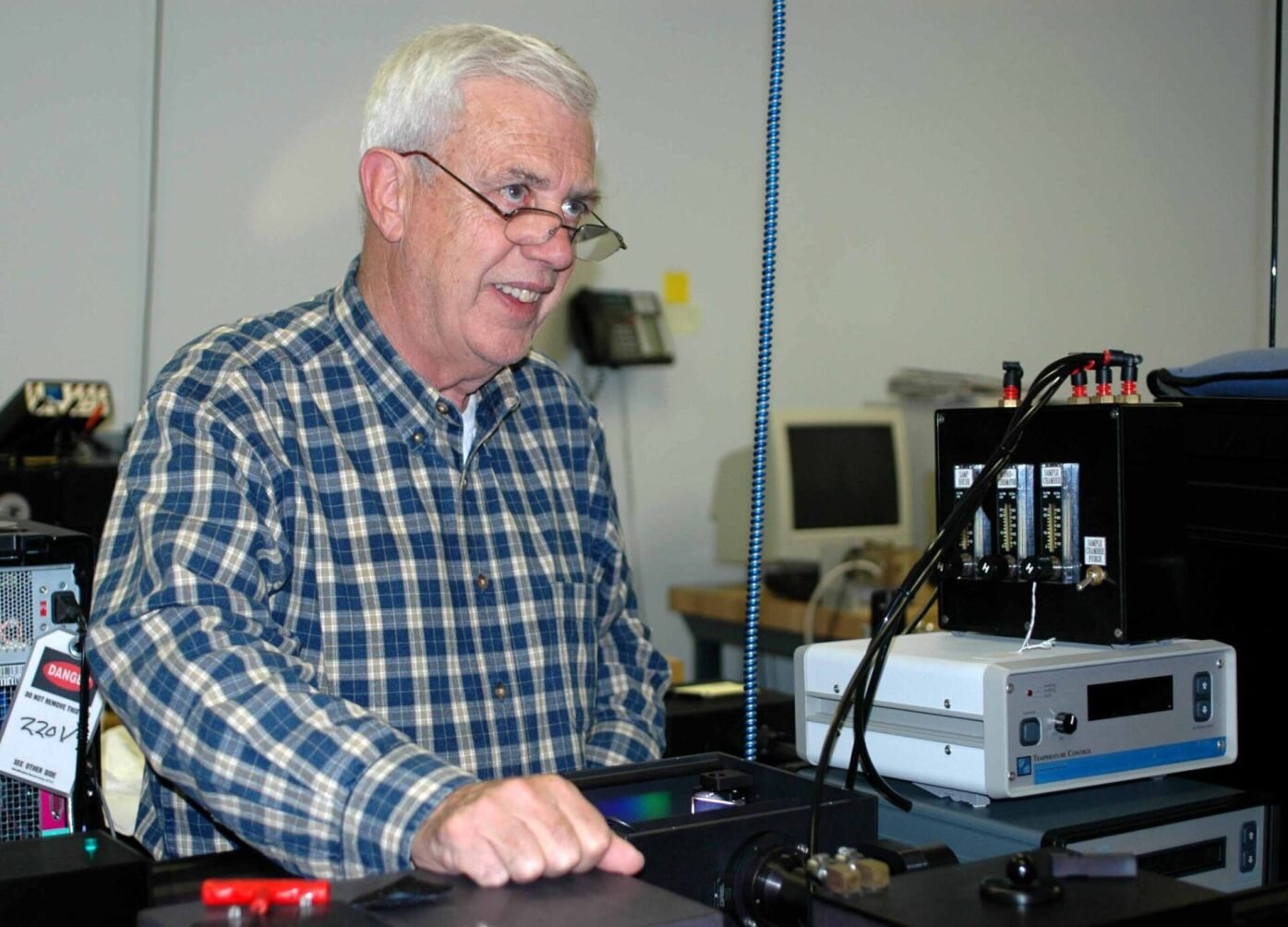Examine This Report on Spectrophotometers
Examine This Report on Spectrophotometers
Blog Article
Some Known Incorrect Statements About Circularly Polarized Luminescence
Table of ContentsNot known Factual Statements About Uv/vis/nir How Uv/vis can Save You Time, Stress, and Money.The Spectrophotometers StatementsAll About Spectrophotometers10 Simple Techniques For SpectrophotometersCircularly Polarized Luminescence Can Be Fun For Anyone8 Simple Techniques For Circularly Polarized LuminescenceThe Best Strategy To Use For SpectrophotometersThe Basic Principles Of Uv/vis The 30-Second Trick For Uv/vis/nirThe 30-Second Trick For Circular DichroismSome Known Incorrect Statements About Circularly Polarized Luminescence Uv/vis/nir Things To Know Before You Get This
It is then scanned through the sample and the referral solutions. Fractions of the event wavelengths are transmitted through, or shown from, the sample and the referral. The resultant light strikes the photodetector device, which compares the relative intensity of the two beams. Electronic circuits convert the relative currents into direct transmission portions and/or absorbance/concentration worths.The transmission of a reference compound is set as a baseline (information) value, so the transmission of all other substances are recorded relative to the preliminary "zeroed" substance. The spectrophotometer then transforms the transmission ratio into 'absorbency', the concentration of particular components of the test sample relative to the preliminary compound.
Considering that samples in these applications are not easily available in big amounts, they are especially suited to being analyzed in this non-destructive strategy. In addition, valuable sample can be saved by making use of a micro-volume platform where as little as 1u, L of sample is needed for total analyses. A brief description of the procedure of spectrophotometry consists of comparing the absorbency of a blank sample that does not include a colored substance to a sample which contains a colored compound.
The Best Strategy To Use For Circular Dichroism
In biochemical experiments, a chemical and/or physical home is chosen and the procedure that is used is specific to that residential or commercial property in order to obtain more details about the sample, such as the amount, pureness, enzyme activity, etc. Spectrophotometry can be used for a variety of techniques such as figuring out optimum wavelength absorbance of samples, figuring out optimum p, H for absorbance of samples, figuring out concentrations of unidentified samples, and determining the p, Ka of different samples.: 21119 Spectrophotometry is likewise a practical procedure for protein purification and can also be utilized as a method to create optical assays of a compound.
It is possible to know the concentrations of a 2 element mix using the absorption spectra of the basic solutions of each component. To do this, it is required to understand the extinction coefficient of this mixture at 2 wave lengths and the termination coefficients of solutions that consist of the recognized weights of the two elements.

An Unbiased View of Circularly Polarized Luminescence
A lot of spectrophotometers are utilized in the UV and noticeable regions of the spectrum, and a few of these instruments likewise run into the near-infrared region also. The concentration of a protein can be estimated by determining the OD at 280 nm due to the existence of tryptophan, tyrosine and phenylalanine (https://www.quora.com/profile/Julie-Ann-DeSa-Lorenz).
Nucleic acid contamination can also interfere. This technique needs a spectrophotometer capable of determining in the UV area with quartz cuvettes.: 135 Ultraviolet-visible (UV-vis) spectroscopy involves energy levels that excite electronic shifts. Absorption of UV-vis light thrills molecules that remain in ground-states to their excited-states. Noticeable region 400700 nm spectrophotometry is utilized extensively in colorimetry science.
These curves can be used to check a new batch of colorant to examine if it makes a match to specs, e
Traditional visible conventional spectrophotometers area not detect if identify colorant or the base material has fluorescence. This can make it difficult to handle color issues if for example one or more of the printing inks is fluorescent. There are two significant setups for visual spectrum spectrophotometers, d/8 (round) and 0/45.
Researchers utilize this instrument to determine the amount of substances in a sample. In the case of printing measurements 2 alternative settings are commonly used- without/with uv filter to control better the effect of uv brighteners within the paper stock.
Getting My Circular Dichroism To Work
Some applications need small volume measurements which can be performed with micro-volume platforms. As described in the applications area, spectrophotometry can be utilized in both qualitative and quantitative analysis of DNA, RNA, and proteins. Qualitative analysis can be used and spectrophotometers are utilized to tape-record spectra of compounds by scanning broad wavelength regions to identify the absorbance homes (the intensity of the color) of the substance at each wavelength.

What Does Spectrophotometers Do?
One significant factor is the type of photosensors that are available for different spectral areas, but infrared measurement is also challenging because practically whatever produces IR as thermal radiation, particularly at wavelengths beyond about 5 m. Another complication is that many products such as glass and plastic soak up infrared, making it incompatible as an optical medium.
important source Obtained Dec 23, 2018. Basic Lab Methods for Biochemistry and Biotechnology (2nd ed.). The important guide to analytical chemistry.
Oke, J. B.; Gunn, J. E.
How Spectrophotometers can Save You Time, Stress, and Money.

1021/ac50048a728. ISSN0003-2700. Ninfa AJ, Ballou DP, Benore M (2015 ). Fundamental Laboratory Approaches for Biochemistry and Biotechnology (3, rev. ed.). Hoboken, NJ: Wiley & Sons. p. 77. ISBN9780470924525. OCLC915641828. "Fully Automatic Double Beam - Atomic Absorption Spectrophotometer (AA 8000)". Lab Equipment. Labindia Analytical Instruments Pvt. Ltd. "Spectrophotometry Applications and Basics".
The smart Trick of Spectrophotometers That Nobody is Talking About
Recovered Jul 4, 2018. Trumbo, Toni A.; Schultz, Emeric; Borland, Michael G.; Pugh, Michael Eugene (April 27, 2013). "Applied Spectrophotometry: Analysis of a Biochemical Mixture". Biochemistry and Molecular Biology Education. 41 (4 ): 24250. doi:10. 1002/bmb. 20694. PMID 23625877. (PDF). www. mt.com. Mettler-Toledo AG, Analytical. 2016. Recovered Dec 23, 2018. Cortez, C.; Szepaniuk, A.; Gomes da Silva, L.
"Checking Out Proteins Filtration Strategies Animations as Tools for the Biochemistry Mentor". Journal of Biochemistry Education. 8 (2 ): 12. doi:. Garrett RH, Grisham CM (2013 ). Biochemistry. Belmont, CA: Cengage. p. 106. ISBN 978-1133106296. OCLC 801650341. Vacation, Ensor Roslyn (May 27, 1936). "Spectrophotometry of proteins". Biochemical Journal. 30 (10 ): 17951803. doi:10. 1042/bj0301795.
PMID 16746224. Hermannsson, Ptur G.; Vannahme, Christoph; Smith, Cameron L. C.; Srensen, Kristian T.; Kristensen, Anders (2015 ). "Refractive index dispersion picking up utilizing a selection of photonic crystal resonant reflectors". Applied Physics Letters. 107 (6 ): 061101. Bibcode:2015 Ap, Ph, L. 107f1101H. doi:10. 1063/1. 4928548. S2CID 62897708. Mavrodineanu R, Schultz JI, Menis O, eds.
The smart Trick of Spectrophotometers That Nobody is Discussing
U.S. Department of Commerce National Bureau of Standards special publication; 378. Washington, D.C.: U.S. National Bureau of Standards.
The procedure starts with a regulated light source that lights up the examined sample. When it comes to reflection, as this light engages with the sample, some is taken in or produced. The emitted light travels to the detector, which is analyzed, quantified, and provided as industry-standard color scales and indices.
Market governing bodies usually specify specific metrics for specific products, such as Tomato and Coffee indices. The simplified math looks like this: Where R is the reflection coefficient. All terms are assessed over the visible spectrum from 400 to 700 nm. In the case of transmission, when the light engages with the sample, it is either taken in, shown, or sent.
Some Known Questions About Uv/vis/nir.
Examples consist of APHA (American Public Health Association) for watercolor and purity analysis, ASTM D1500 for petrochemical color analysis, edible oil indices used in food, and color analyses of drinks. All terms are evaluated over the noticeable spectrum from 400 to 700 nm.
Image Credit: Matej Kastelic/ Dr. Arnold J. Beckman and his associates at the National Technologies Laboratories first created the spectrophotometer in 1940. In 1935 Beckman established the business, and the discovery of the spectrophotometer was their most ground-breaking invention.
Rumored Buzz on Uv/vis
Over time, researchers kept improving the spectrophotometer style to enhance its performance. The UV capabilities of the design B spectrophotometer were improved by replacing the glass prism with a quartz prism.
Normally, a spectrophotometer is made up of two instruments, namely, a spectrometer and a photometer. A fundamental spectrophotometer includes a light source, a monochromator, a collimator for straight light beam transmission, a cuvette to put a sample, and a photoelectric detector.
The Greatest Guide To Uv/vis
There are different types of spectrophotometers in various shapes and sizes, each with its own function or functionality. A spectrophotometer determines how much light is shown by chemical parts. UV/Vis/NIR. It determines the distinction in light intensity based upon the overall amount of light presented to a sample and the quantity of light beam that travels through the sample solution
A spectrophotometer is used to identify the concentration of both colorless and colored solutes in a service. This instrument is used to determine the rate of a response.
Report this page